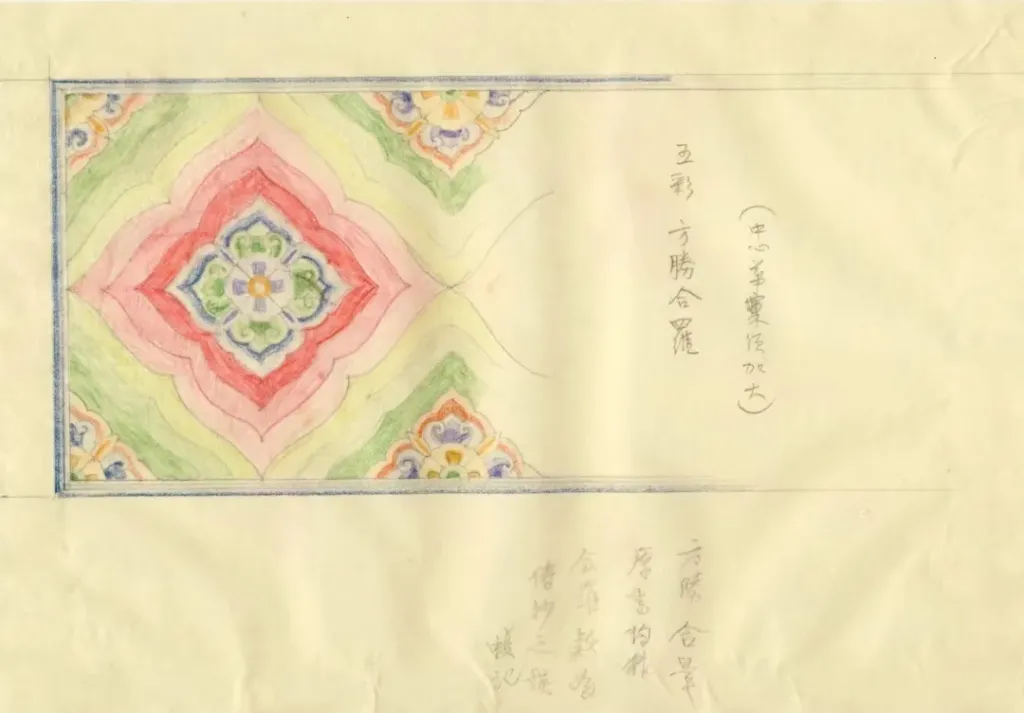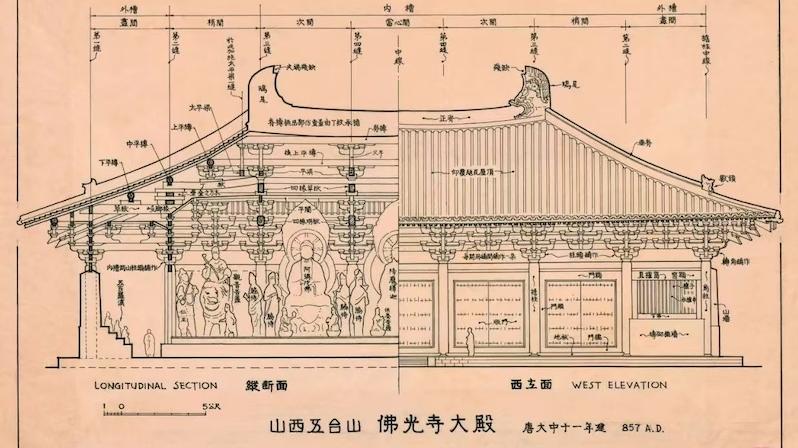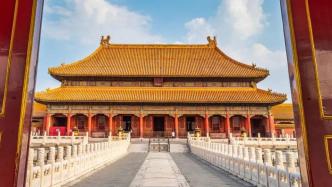
In the construction of ancient Chinese capitals, the planning of the central axis is a concentrated expression of the Chinese people's thinking of "valuing China".
The Paper was informed that at 11:15 local time on July 27, 2024 (13:45 on July 27, 2024, Beijing time), at the 46th UNESCO World Heritage Conference held in New Delhi, the capital of India, With the review of newly applied world heritage projects completed, the chairman of the conference announced that China's application for "Beijing's Central Axis: A Masterpiece of China's Ideal Capital Order" successfully passed the review and was successfully included in the "World Heritage List", becoming China's 59th World Heritage .

Screenshot of the 46th World Heritage Conference reviewing the "Beijing Central Axis". The Paper News Photo
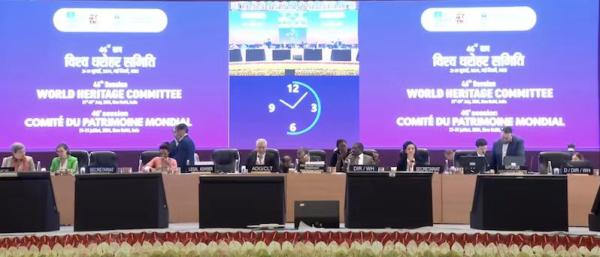
The review site of the 46th World Heritage Conference (The Paper)
Mr. Liang Sicheng, a scholar of ancient architecture, said: "Historically, the culture of each nation has produced its own architecture, but unfortunately, not every nation can understand and carry forward its own culture from ancient architecture. "
From Yongding Gate, Zhengyang Gate to Tiananmen, from the Forbidden City, Jingshan, Wanning Bridge to the Bell and Drum Tower, landmark heritage buildings, a central axis, a piece of ancient Chinese history, the 7.8-kilometer-long Beijing Central Axis is the world It is the longest and most complete ancient urban axis in the world and is known as the soul and backbone of the old city of Beijing.

Beijing Central Axis Image Source: Beijing Central Axis World Heritage Application Text
According to reports, the UNESCO World Heritage Committee recognized that the "Beijing Central Axis" meets World Heritage Standards 3 and 4, and highly appreciated the Chinese government's great efforts and outstanding achievements in the protection and inheritance of cultural heritage in the old city of Beijing. The World Heritage Committee believes that the traditional Chinese capital planning theory and the philosophical ideas of "Zhong" and "Harmony" embodied in the "Beijing Central Axis" have made important contributions to the history of world urban planning (Criterion 3); the "Beijing Central Axis" as a traditional Chinese An outstanding example of the mature stage of the capital's central axis, representing a unique type in the history of world cities (Criterion 4); recognizing the integrity, authenticity and protection and management status of the "Beijing Central Axis". The World Heritage Committee stated that the authenticity of the "Beijing Central Axis" is reflected in its continuity as the core of the capital. Tiananmen Square and the building complex are an important part of the development of the "Beijing Central Axis" and recognize the necessity of maintaining its current form.
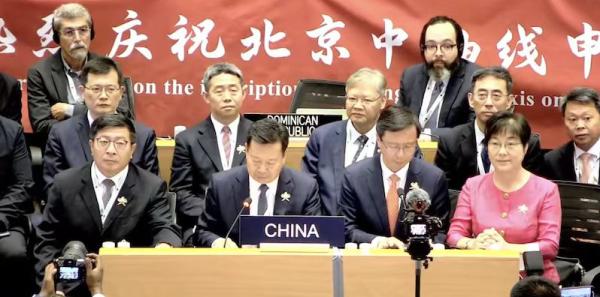
At the scene after the adoption of the "Beijing Central Axis" at the 46th World Heritage Conference, Li Qun, Vice Minister of the Ministry of Culture and Tourism and Director of the State Administration of Cultural Heritage, spoke. The Paper News Photo
When Li Qun, Vice Minister of the Ministry of Culture and Tourism and Director of the State Administration of Cultural Heritage, spoke at the World Heritage Conference, he expressed the joy and excitement of the Chinese people over the successful inclusion of the "Beijing Central Axis" on the UNESCO World Heritage List and expressed his sincere gratitude to UNESCO. We would like to express our gratitude to the World Cultural Organization, the World Heritage Committee and the International Council on Monuments and Sites. He said that the successful application for World Cultural Heritage is a new starting point. China will earnestly implement the Convention for the Protection of World Cultural and Natural Heritage, protect and repair cultural relics and buildings, respond to the impact of natural disasters, encourage community residents to participate, scientifically guide tourism development, and improve interpretation and display capabilities. and other aspects continue to make efforts to ensure that the "Beijing Central Axis" is properly protected and inherited. China will continue to coordinate the protection and management of world cultural heritage, further strengthen exchanges and cooperation with international organizations and state parties, and use the platform of the Asian Cultural Heritage Protection Alliance to contribute to promoting exchanges and mutual learning among civilizations and building a community with a shared future for mankind. Tan Xuxiang, deputy mayor of Beijing, spoke on behalf of the government where the heritage site is located.
It took 12 years to apply for the Beijing Central Axis as a World Heritage Site. In the initial stage of applying for World Heritage (2012 to 2016), in 2012, upon application from Beijing, the State Administration of Cultural Heritage included the "Beijing Central Axis" in the "China World Cultural Heritage Preparatory List" and submitted it to the World Heritage Center for filing; organized expert guidance Beijing has started compiling the application text to initially refine the value; it has supported Beijing in formulating the "Hundred Cultural Relics Protection and Repair Plan" and implemented the protection and repair of important cultural relics buildings on the central axis such as the Temple of Heaven, Jingshan, Sheji Altar, Taimiao Temple, Bell and Drum Tower, and Zhengyang Gate. In the comprehensive acceleration stage (2017 to 2021), General Secretary Xi Jinping inspected Beijing and put forward clear requirements for the protection of Beijing's historical and cultural heritage. The Party Central Committee and the State Council approved the "Beijing City Master Plan" and "actively promote the application of the Central Axis for World Heritage" as a Planning focus; Beijing has established a leading group to promote the construction of a national cultural center, with a special team to promote the application of the Central Axis as a World Heritage Site; the State Administration of Cultural Heritage and the Beijing Municipal Government have established an operational ministry-municipal cooperation mechanism to formulate and implement the "Three-Year Action Plan for the Application and Protection of Beijing's Central Axis" , steadily promotes value interpretation, protection management, environmental remediation, and public participation, and has held international academic seminars for three consecutive years, organizing domestic and foreign experts and scholars to conduct in-depth discussions on key technical issues such as heritage value, application pathways, heritage composition, and inclusion criteria. In the sprint stage (2022 to 2024), in October 2022, with the approval of General Secretary Xi Jinping, the "Beijing Central Axis" was determined to be my country's 2024 World Heritage application project. The State Administration of Cultural Heritage guided Beijing to carefully craft the application text, and after repeated studies, determined the overall work path for the application of 15 heritage elements; the State Administration of Cultural Heritage and the Beijing Municipal Government held 9 consecutive joint meetings of ministry-municipal cooperation to coordinate solutions In order to meet the major issues of heritage application and inspection, the "Beijing Central Axis Cultural Heritage Protection Regulations" and the "Beijing Central Axis Protection and Management Plan" were promulgated, and a central and local cross-department collaborative management working mechanism was established; efforts were made to promote archaeological excavation research, and the Zhengyang Bridge, Overpass, and Major discoveries such as the remains of the road in the southern section have filled the "gap" in the remains of the road in the southern section of the central axis. With the approval of the State Council, the State Administration of Cultural Heritage officially submitted the application text to the UNESCO World Heritage Center on January 30, 2023; in August 2023, the on-site technical assessment of the International Council on Monuments and Sites was successfully completed; in response to the issues raised in the professional assessment, The State Administration of Cultural Heritage submitted supplementary explanatory materials twice in November 2023 and February 2024, and sent a delegation to Paris to participate in a professional defense, explaining in detail the spatiotemporal framework of Beijing’s central axis to the International Council on Monuments and Sites, and clearly elaborating on Chinese traditions The continuity of the concept of capital planning and the integrity of ancient and modern parts deeply explain the important value and significance of the traditional philosophical thoughts of "China" and "Harmony" on a global scale. On May 30, 2024, the International Council on Monuments and Sites formed an evaluation report and made the highest evaluation conclusion to directly include the "Beijing Central Axis" in the World Heritage List, laying a solid professional foundation for the successful application for World Heritage.
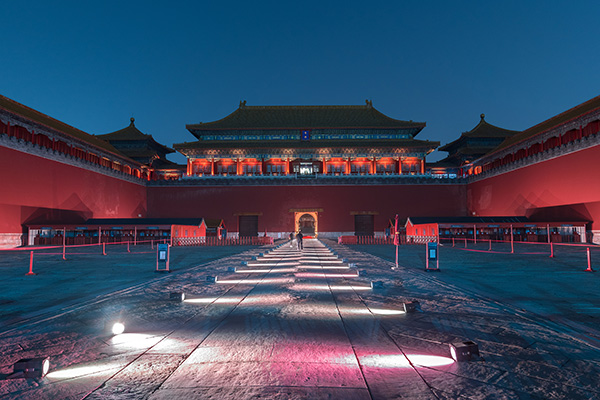
Night view of the Forbidden City on the central axis of Beijing. The Paper news materials
"The definition of Beijing's central axis is not just an axis, it is also a group of buildings, starting from the Bell and Drum Tower, Wanning Bridge, Jingshan, the Forbidden City, then to Duanmen, then the symmetrical layout of the Temple of Heavenly Temple on both sides, and then Tiananmen and Jinshui Bridge , then Tiananmen Square and the building complex, Zhengyangmen, Zhengyangmen and Zhengyangmen Archery Tower, then to the remains of the southern section, then add Xiannongtan, the Temple of Heaven is symmetrical on both sides, and then to Yongdingmen, we regard it as a whole It is a huge building complex, 7.8 kilometers long," Lu Zhou, director of the National Heritage Protection Center of Tsinghua University, said in a previous lecture on Beijing's central axis.

Qianqing Gate | Palace Museum
Lu Zhou, director of the National Heritage Protection Center at Tsinghua University, said in an exclusive interview that the story of the Central Axis is not the story of the Central Axis itself, but the story of Chinese civilization, which reflects the "world ambition" in the minds of the Chinese people. Facing a disorderly external world, the Chinese people have a clear sense of order and have built an ideal city accordingly.
"The 'central axis' not only includes ancient buildings, but also modern buildings. Some people used to wonder that the things that were applied for World Heritage should be ancient things. Why is Tiananmen Square also included in the concept of Beijing's central axis? In fact, the world heritage is not only Ancient things, such as the Sydney Opera House built in the 1970s, and many buildings from the last century, are also world heritage sites. Tiananmen Square is not regarded as a separate world heritage site, but as one of the heritage points to reflect the central axis of Beijing. The spirit and ideas embodied continue. The central axis is a living heritage that is still living in the contemporary era and is still extending to the north and south. If the application is successful, several heritage sites such as Tiananmen Square and related historical buildings will be included. , will become China’s ‘youngest’ world heritage site so far,” Lu Zhou said.

Beijing aerial view
The Beijing Central Axis is located in the center of Beijing's old city, running through the north and south of the old city. It is composed of 15 heritage elements and is a combination of buildings and heritage sites that governs the entire old city planning pattern. Beijing's central axis consists of ancient royal palace buildings, ancient royal sacrificial buildings, ancient city management facilities, national ceremonial and public buildings, and the remains of the central road. It was first built in the 13th century and took shape in the 16th century. It has been continuously improved since then and has gone through more than 7 years. century, an orderly and magnificent urban architectural complex has been formed, witnessing the ideal capital order that has influenced China's capital construction tradition for more than two thousand years.
The 7.8-kilometer-long Beijing Central Axis starts from the Bell and Drum Tower in the north, and passes through Wanning Bridge, Jingshan, the Forbidden City, Duanmen, Tiananmen, Waijinshuiqiao, Tiananmen Square and the building complex, Zhengyangmen, and the road remains in the southern section of the central axis in the south. To the south is the Yongding Gate; the Ancestral Temple, the Altar of Sheji, the Temple of Heaven and the Altar of Xiannong are arranged symmetrically from east to west on both sides. According to the plan, these 15 buildings and remains are the elements of the central axis heritage.
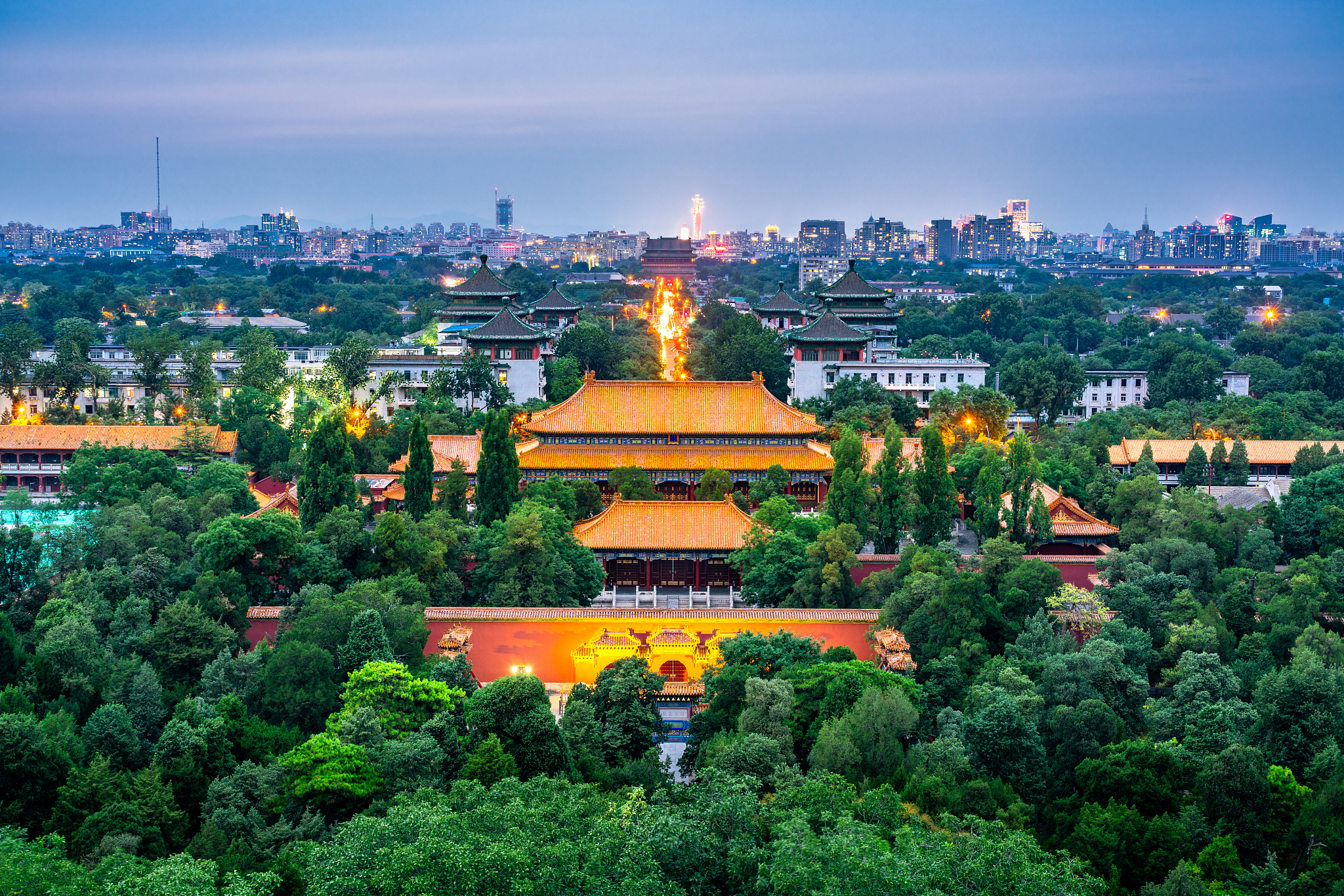
Historical buildings on the central axis of Beijing
Although Beijing's central axis has long existed, it was architect Liang Sicheng who first proposed the concept of Beijing's central axis. He began to use the term "central axis" in the "History of Chinese Architecture" completed in 1944. "The entire layout of the Forbidden City is centered on the three halls outside the central axis: Taihe Hall, Zhonghe Hall, and Baohe Hall. It is also the imperial concubine of the court meeting." He praised the central axis with great enthusiasm, saying that Beijing's "magnificence lies in this scale that extends from north to south and continues to the end." The recognition of the value of Beijing’s central axis in urban planning also started with Liang Sicheng. In Liang Sicheng's 1951 book "Beijing: An Unparalleled Masterpiece of Urban Planning", he praised "an eight-kilometer-long north-south central axis, the longest and greatest in the world, passing through the whole city. Beijing's unique and magnificent order It arises from the establishment of this central axis."
As the head of the team that compiles the application text for the Central Axis, Lu Zhou, director of the National Heritage Center of Tsinghua University, shared a set of data: the Central Axis connects 3 World Heritage sites, 11 national key cultural relics protection units, and 2 municipal cultural relics protection units. , there are also 2 immovable cultural relics that have not been graded; the buffer zone involves 514 cultural relics of all levels. "The central axis has built a system that connects various historical and cultural relics in Beijing's old city. It not only carries Chinese history and culture, but also reflects the changes and development of the city through revitalization and public participation." He said that Beijing's central axis application Heritage protection work has promoted the cultural identity of citizens, formed huge social cohesion, and promoted the overall protection of historical and cultural cities.
Beijing's central axis is the most complete existing ancient urban axis in the world. It runs through the old city of Beijing and is not only the spatial axis of Beijing, but also the cultural axis. Shan Jixiang, president of the Chinese Cultural Relics Society, special researcher of the Central Research Institute of Literature and History, and director of the Academic Committee of the Palace Museum, said: "In this 7.8-kilometer-long square space, a five-in-one ecosystem of ecology, economy, politics, culture, and society has been formed. The cultural landscape of the central axis city contains the moving culture and history created by the working people from ancient times to the present.”
The State Administration of Cultural Heritage has previously stated that it hopes that Beijing will follow the "three benefits" requirements for world cultural heritage application, deeply explore the multiple values of Beijing's central axis, and show the world a comprehensive and true version of ancient China and modern China; insist on protecting the first, the old city cannot Before demolition, comprehensively protect the cultural relics buildings, texture patterns and landscape features, and explore the systematic protection of historical and cultural heritage; unify the renovation and upgrading of the old city with the protection of historical relics and preservation of historical context; encourage social participation, activate historical scenes, and improve supporting policies , make cultural relics and cultural heritage truly come alive, and let the results of cultural relic protection and utilization benefit the public.
axis value
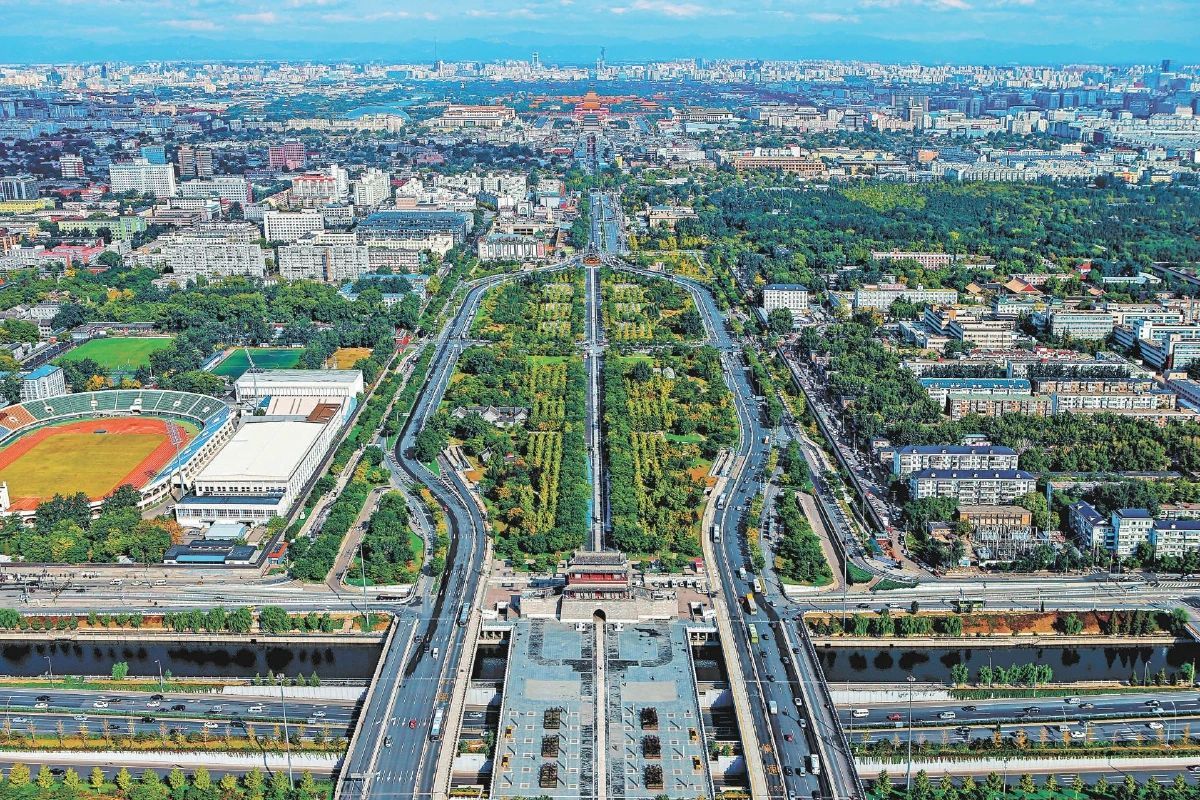
Beijing Central Axis (Source: Beijing Daily)
Beijing's central axis has outstanding value characteristics in six aspects: regional site selection, planning pattern, functional tradition, architectural aesthetics, historical hierarchy and evidence of change, and is fully supported by 15 heritage components.
Regional siting: the physical epitome of national order:
The central axis of Beijing embodies the concept of traditional Chinese capital siting. Beijing's urban site selection follows the principle of "like the sky and the earth", positioning the capital on the ground opposite to the Beichen in the sky; it also follows the traditional concept of "surrounded by mountains and water", and cleverly integrates the landscape environment of the area where the central axis is located with the geography. The conditions are consistent, emphasizing the guiding role of the central axis in Beijing’s urban planning pattern.
Planning pattern: the planning paradigm of an ideal capital:
The central axis of Beijing as a whole shows the capital planning paradigm of "facing the future market" and "left ancestors and right society" contained in the "Kaogong Ji" written in the pre-Qin period. The sacrificial buildings closely distributed on both sides of the axis highlight the Chinese civilization's emphasis on etiquette. The respect for tradition has become an outstanding example of the central axis planning pattern of traditional Chinese capitals that has developed and matured over thousands of years.
Functional tradition: the spatial carrier of multiple traditions:
Beijing's central axis takes national ceremonial culture as its core and connects the national ceremonial space of royal palaces, ceremonial sacrifices, and celebrations with urban management facilities and other urban living spaces needed for ordinary people's daily lives, focusing on the old city of Beijing. Complex and diverse cultural traditions.
Architectural aesthetics: magnificent landscape sequence:
As the longest and most well-preserved traditional capital axis in China, the Beijing Central Axis is 7.8 kilometers long and is the ultimate display of Chinese traditional aesthetics. The plane layout of important nodes on the central axis uses modular proportions to form a strong expression of hierarchy and rhythm. The centered and symmetrical layout and form design show the differences and changes contained in the rigorous order, and contrast the scenery and frames. Traditional Chinese landscape design techniques such as landscapes create a patchwork of landscape interest in different sections.
Historical level: continuous historical context:
Beijing’s Central Axis is the product of more than seven centuries of accumulated history in the old city of Beijing. The planning pattern of the northern section was formed in the Yuan Dynasty and is still in use today. The planning pattern and architectural landscape of the middle and southern sections were formed in the Ming Dynasty (1368-1644) and enriched in the Qing Dynasty (1636-1912). The overall layout gradually evolved in the 20th century. It developed into an urban space that is open to the public and continues to exert a huge influence on urban development today. Beijing's central axis demonstrates the enduring vitality of traditional Chinese planning concepts with its progressive and profound historical accumulation, and demonstrates the cultural characteristics of Chinese civilization's diversity and unity.
Evidence of change: historical witness of major events:
As the core of China's capital in the Yuan, Ming, Qing and modern times, Beijing's central axis is the place where many historical events took place. It witnessed the end of China's two thousand years of dynastic rule, witnessed the establishment of the People's Republic of China, and showed Chinese society. The historical transformation from dynastic rule to a modern state.
paragraph landscape
North Section
The Bell and Drum Tower at the north end is the tallest building on the central axis of Beijing. With its grand scale and tall volume, it forms a strong contrast with the blue-grey, relatively low-density and dense traditional courtyard buildings in the surrounding neighborhoods. The bustling commercial buildings along the northern section of the central axis clearly define the scale of the streets and lanes of the central road, forming a south-facing, sunny, prosperous and life-filled urban landscape. Wanning Bridge and the Yuhe River system it spans add a soft and warm temperament to the northern section of the central axis. Together with the two towering buildings of the Bell Tower and the Drum Tower, and the rows of commercial streets, they form the first layer of Beijing's central axis from north to south. spatial level.
Northern part of the middle section
The urban landscape in the northern part of the middle section is mainly composed of royal palaces and sacrificial buildings from the Ming and Qing Dynasties. Here is the highest-level building on Beijing's central axis, with brilliant and shining glazed tile roofs and magnificent architectural colors, forming the second spatial level of Beijing's central axis. Jingshan is the commanding height of this area and the best visual node overlooking the north-south landscape. Looking south and north along the central axis of Beijing from the Wanchun Pavilion on the top of Jingshan Mountain, the straight and wide streets and overlapping symmetrical buildings form a neat and orderly structure. , magnificent city landscape. With Wanchun Pavilion as the center, there are five pavilions arranged symmetrically from east to west, forming the climax of this section of the architectural landscape.

View of the Forbidden City from Jingshan Mountain in Beijing (Source: Beijing Central Axis official website)
south of central section
Located in the southern part of the middle section of Beijing's central axis, the Tiananmen Square building complex has a gentle and open shape. It was a venue for national celebrations built from the 1950s to the 1970s. The Monument to the People's Heroes located on the central axis respects and continues the traditional axis planning pattern. It stands in the middle of the square in the style of a classical Chinese stele, equidistant from the Tiananmen and Zhengyangmen towers to emphasize the importance of the central pattern. The National Museum and the Great Hall of the People on the east and west sides of the square are symmetrical and balanced in location, volume, height and facade. Chairman Mao Memorial Hall, the Great Hall of the People, and the National Museum all adopt the form of flat roofs and classical colonnades, while the colors and decorations adopt the traditional Chinese style. The architectural form expresses the specific characteristics of the times, fully highlights the dominant position of the central monument, and is harmoniously unified with the traditional landscape intention of Beijing's central axis, forming the third spatial level of Beijing's central axis.
Southern section
The southern section of Beijing's central axis runs from Zhengyangmen, through Qianmen Street, Tianqiao South Street and Yongdingmen, forming the fourth spatial level. The northern section of Qianmen Street in the northern part of Duandu is surrounded by prosperous and lively commercial markets; while the southern part of Duandu is the core area for royal ritual activities in the Ming and Qing Dynasties. It has always maintained a natural countryside landscape environment, with dense ancient cypresses and grand sacrificial rituals hidden among them. The architecture constitutes a natural, lonely and mysterious landscape form.
Major events in Beijing’s Central Axis application for World Heritage:
In 2024, "Beijing's Central Axis: A Masterpiece of China's Ideal Capital Order" was successfully included in the World Heritage List, becoming my country's 59th World Heritage.
In February 2023, the application text will be formally submitted to the UNESCO World Heritage Center.
In October 2022, the "Beijing Central Axis Cultural Heritage Protection Regulations" will be officially implemented
In August 2022, the State Administration of Cultural Heritage decided to recommend the "Beijing Central Axis" as my country's 2024 World Cultural Heritage application project
In March 2021, the "Beijing Historical and Cultural City Protection Regulations (2021 Revision)" was officially implemented
In August 2020, the "Three-Year Action Plan for the Application and Protection of the Central Axis" was released
In 2017, “actively promoting the application of the Central Axis as a World Heritage Site” was written into the “Beijing Urban Master Plan (2016-2035)”
In 2012, the Beijing Central Axis was included in the "China World Cultural Heritage Tentative List"
In 2011, Beijing proposed to apply for the central axis as a World Heritage Site.
(This article is written with comprehensive reference to the official website of the Beijing Central Axis Heritage Protection Center "Beijing Central Axis" and relevant reports from Beijing Daily, Beijing News, China Youth Daily and other media)

